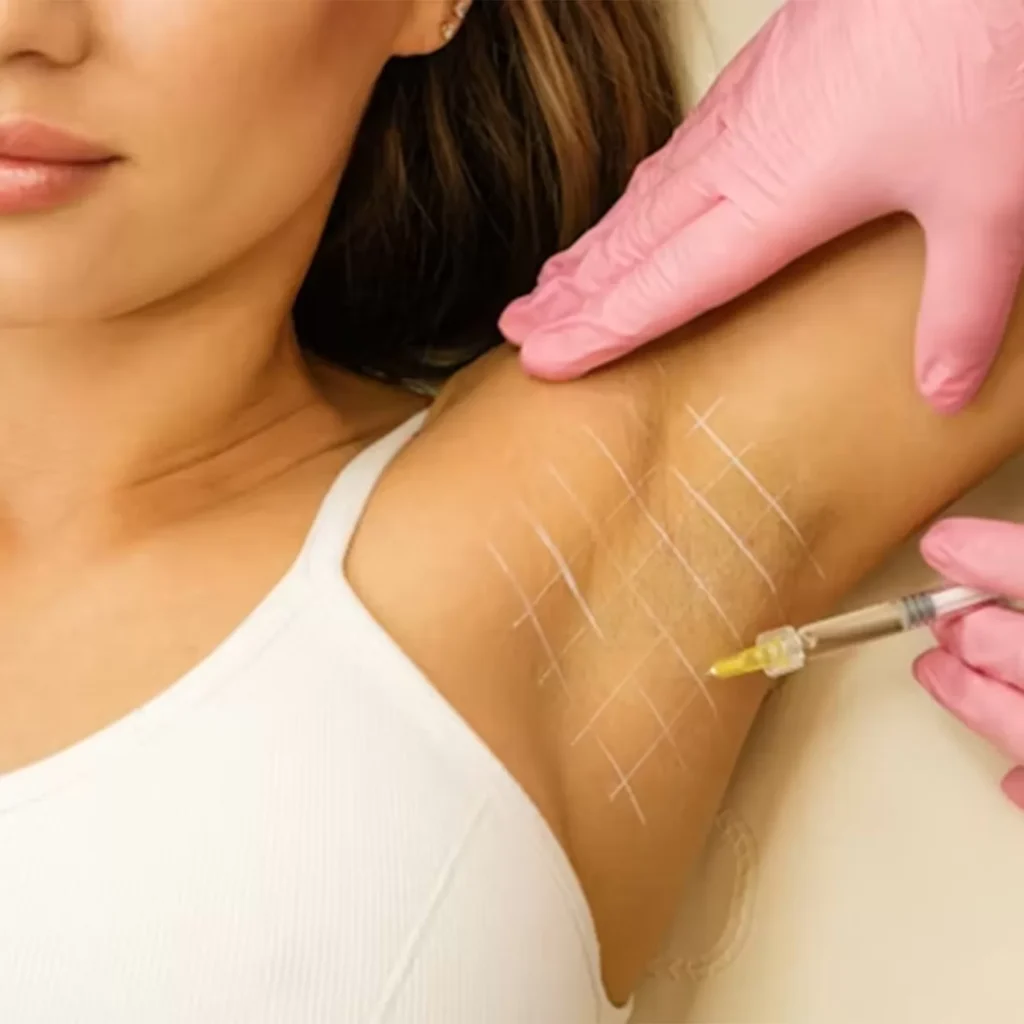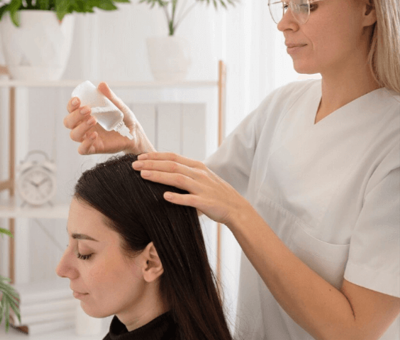A Complete Medical Overview from Korean Clinics
Hyperhidrosis, or excessive sweating, can significantly impact a person’s quality of life—causing physical discomfort, social embarrassment, and even emotional distress. While many people associate Botox (botulinum toxin) with wrinkle reduction, it is also a clinically proven and FDA-approved treatment for hyperhidrosis.
In South Korea, known globally for its advanced aesthetic and dermatologic care, Botox for hyperhidrosis is a common and effective solution offered at top-tier dermatology clinics. This article provides a full medical overview of how the treatment works, its benefits, expected outcomes, and what patients can expect from Korean clinics.
Understanding Hyperhidrosis
Hyperhidrosis is a medical condition characterized by abnormally increased sweating, beyond what is necessary for thermoregulation. It can be:
- Primary (focal) hyperhidrosis: Often hereditary, affecting specific areas such as the underarms (axillary), hands (palmar), feet (plantar), or face.
- Secondary hyperhidrosis: Linked to an underlying medical condition such as diabetes, thyroid dysfunction, or certain medications, usually involving generalized sweating.
How Botox Treats Hyperhidrosis
Botox (botulinum toxin type A) treats hyperhidrosis by blocking the chemical signals from the nerves that stimulate the sweat glands. When injected into areas affected by excessive sweating, Botox temporarily paralyzes the overactive sweat glands, significantly reducing sweat production.
Mechanism of Action:
- Botox inhibits the release of acetylcholine, the neurotransmitter responsible for activating sweat glands.
- The effect is localized, meaning it only works where it’s injected.
Result: Dramatic decrease in sweating in the treated area, usually within 3 to 7 days post-procedure, lasting for 4 to 8 months.
Why Korean Clinics Excel in Treating Hyperhidrosis with Botox
South Korea is internationally renowned for its dermatology and cosmetic medicine sectors, and Botox for hyperhidrosis is a specialty service in many Korean clinics, for both locals and medical tourists.
Key Advantages of Korean Clinics:
- Certified Dermatologists & Specialists: Most treatments are conducted by physicians with board certification in dermatology or cosmetic surgery.
- Use of Premium Toxins: Clinics typically use top-tier brands like Botox (Allergan), Dysport, or Xeomin, depending on patient needs.
- Precision Injection Technique: Korean clinics use micro-injection methods with fine needles, maximizing effectiveness and minimizing discomfort.
- Advanced Diagnostic Tools: Some clinics offer Minor’s iodine-starch test to map out active sweat areas before injection.
- Privacy-Focused Care: Treatments are discreet, with high-end recovery rooms and bilingual support staff for international patients.
Common Treatment Areas
- Underarms (Axillary Hyperhidrosis) – Most popular and effective area for Botox; typically requires 50–100 units total.
- Palms (Palmar Hyperhidrosis) – Effective, but may involve more discomfort; temporary muscle weakness is a rare side effect.
- Soles of the feet (Plantar Hyperhidrosis) – Less common due to sensitivity and pain; anesthesia may be offered.
- Forehead and Scalp – Treated for craniofacial hyperhidrosis, particularly in men.
- Chest or Back – For specific cases, though less commonly treated.
Procedure Details: What to Expect at a Korean Clinic
Consultation
- Skin and sweat pattern assessment
- Minor’s starch test (if needed) to visualize sweat glands
- Medical history review, especially for neuromuscular conditions
Treatment
- Topical numbing cream applied for comfort
- Injections spaced evenly (1-2 cm apart) in the treatment zone
- Session time: 15–30 minutes
- No anesthesia needed for most patients (except plantar/palmar cases)
Post-Treatment Care
- Resume normal activities immediately
- Avoid heavy exercise or sauna use for 24 hours
- Results appear within 3–7 days, peak at 2 weeks
Duration of Effectiveness
- 4 to 8 months on average
- Most patients repeat treatments twice per year
- Duration may increase over time with consistent treatment
Who Is a Good Candidate?
You may be a suitable candidate for Botox hyperhidrosis treatment if you:
- Have diagnosed or suspected focal hyperhidrosis
- Have failed other therapies (e.g., topical aluminum chloride, iontophoresis)
- Are not pregnant or breastfeeding
- Have no neuromuscular disorders like myasthenia gravis or ALS
Risks and Side Effects
Botox is generally safe, but minor side effects can occur:
- Bruising or mild swelling at injection site
- Temporary muscle weakness in the hands (if treated for palmar hyperhidrosis)
- Mild pain during injection (manageable with numbing agents)
- Allergic reaction (rare)
Korean clinics mitigate these risks with precise dosing and anatomical expertise, especially in sensitive areas like the hands or feet.
Cost of Botox for Hyperhidrosis in Korea
Korea offers high-quality treatment at competitive global pricing:
| Area Treated | Average Cost (USD) |
|---|---|
| Underarms | $300 – $500 |
| Palms | $400 – $600 |
| Feet | $400 – $600 |
| Forehead/Face | $250 – $450 |
Many clinics offer package discounts for multiple areas or follow-up care.
Medical Tourism Tips: Planning Your Botox Trip to Korea
- Schedule online consultations in advance (many clinics offer English services).
- Plan for 2–3 days in Korea for treatment and follow-up.
- Check visa requirements and clinic accreditations (look for Korean Accreditation Program for Hospitals Serving Foreign Patients).
- Ask about tax refund eligibility on medical aesthetic procedures.
- Combine your Botox session with facial treatments, laser therapy, or skin boosters for a full skincare package.
Conclusion: A Practical, Proven Solution for Excessive Sweating
Botox is a safe, effective, and non-surgical treatment for hyperhidrosis—one that offers fast relief and life-changing confidence. With Korea’s excellence in dermatology, skilled professionals, and patient-centric approach, it’s no surprise that medical travelers around the world trust Korean clinics for sweat-free solutions.
If you’re struggling with excessive sweating and looking for a medically backed treatment abroad, consider South Korea—where science, precision, and aesthetics come together for long-term skin health.




